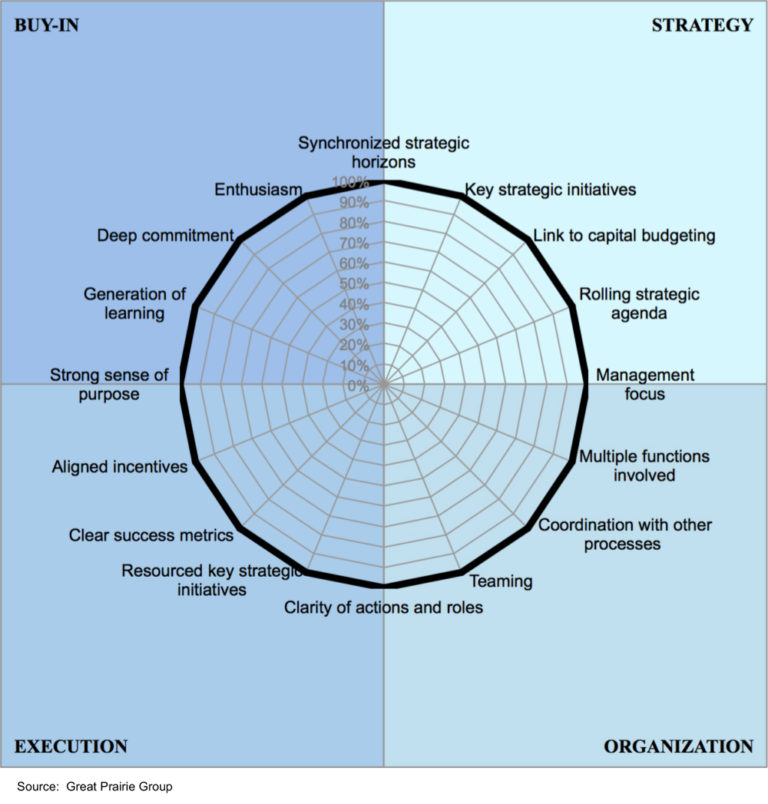Companies spend significant resources on strategic planning every year. Six months to a year into it, many find out that they are no closer to executing their strategy and achieving results than their original starting point, having lost time and money in the meantime.
The good news is that you don’t have to wait a year or even a few months to determine how well your strategic planning process is working for you. A quick test will tell you if you’re heading in the right direction or whether obstacles stand in the way of executing your strategy – saving your company significant time and money upfront.
FOUR FOUNDATIONS OF EFFECTIVE STRATEGIC PLANNING
Companies that excel in strategic planning do four things really well.
- Strategy: They synchronize strategic horizons (corporate strategy, business strategy, divisional strategy), develop key strategic initiatives, tie to capital budgeting, and maintain a continuous strategic dialogue throughout the planning cycle.
- Organization: They involve the extended organization in the process, i.e. all organizational units as needed.
- Execution: They invest significant resources in execution.
- Buy-In: They commit to company-wide buy-in.
Remove any of these conditions and the process fails to deliver results.
TAKE A FEW QUICK MEASUREMENTS
To find out how effective your strategic planning process really is, rate your strategy, organizational involvement, execution, and level of buy-in along the metrics below.

A combined score below 50% for any of the four dimensions flags a weakness in your strategic planning process and potential risk of failure, and should motivate the need for improvement.

